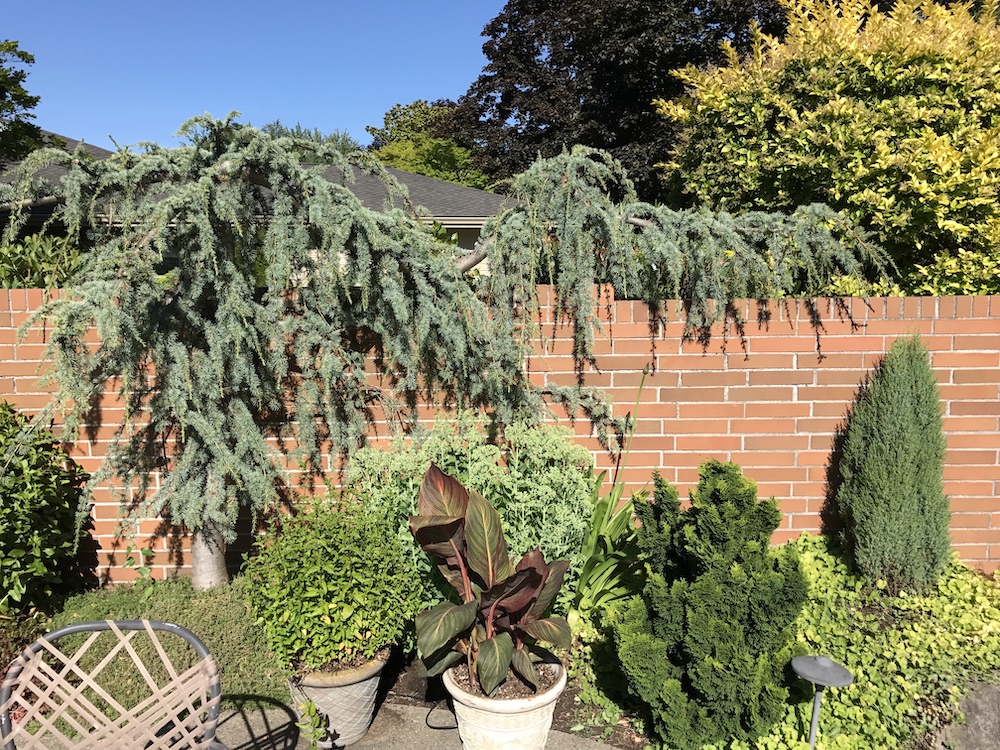
Are you frustrated with all of your shrubs being sheared into boring geometric shapes—spheres, ovals, rectangles—or left to grow in a tangled, misshaped mess? How about looking to the East—all the way to Japan—for some inspiration to revitalize your garden?
When you think of a Japanese garden, what comes to mind? Probably pagoda lanterns, pine trees and Japanese maples pruned in a curiously artful manner, and water features including koi ponds, waterfalls and meandering streams. If you find this appealing, have you considered bringing some of these elements into your own garden in the way that you prune your shrubs and trees? Then consider niwaki.
The Japanese word niwaki simply means “garden trees.” The art of the Japanese niwaki pruning style involves coaxing out of a tree those features believed to signify the essence of a tree including its gnarled trunks, outstretched branches and rounded canopies (Niwaki—The Pruning, Training and Shaping of Trees the Japanese Way, p. 9, by Jake Hobson).
Niwaki is similar to the art of bonsai pruning, with which most people are familiar, except not in a miniaturized form, but involving full-sized trees. Many of the bonsai pruning techniques can be applied to the larger trees and shrubs in the garden but on a grander scale and, obviously, without the same attention to minute detail. Therefore, you can lose the mini-pruners, tweezers and scissors.
In the niwaki pruning style, trees are often made to look older than they really are by encouraging a broad trunk supporting gnarled and drooping branches, and by giving them a more open and attractive appearance so that the structure or architecture of the tree is visible through the foliage. Trees can be made to imitate windswept or lightning struck trees in the wild, which also gives them the appearance of age (A Practical Guide to Japanese Gardening, pp. 240–241, by Charles Chesshire).
Both the bonsai and niwaki styles of pruning attempt to replicate mature trees—some hundreds of years old—as they appear in nature after having endured the rigors of time including weather, pests and adverse growing conditions. We often see such trees clinging to cliffs overhanging the ocean’s shoreline, or in windswept canyons and gorges, or perched high on a mountain side. It is also not uncommon to see such gnarled trees in ancient forests, or growing in an open meadow. In all of these scenarios, time and gravity have caused the trees’ branches to naturally sag gracefully, and as the weaker branches get shaded out by the stronger and larger ones, the trees develop a naturally layered look. When we see such a tree, we are inspired by its character, beauty, symmetry or asymmetry and overall appearance of antiquity, stability and permanence. We sometimes even poetically attribute human characteristics to such trees such as wisdom, grace, dignity and nobility.
The Zen Buddhists, from whom the Japanese learned many aspects of their pruning style, observed nature carefully and made some discoveries. They learned that the perfection and beauty in nature that humans have come to adore and subsequently desire to replicate in their home gardens can quantified in seven principles: asymmetry, simplicity, austere sublimity, naturalness, subtle profundity, freedom from attachment and tranquility (Hobson, p. 22). It is these qualities that make a Japanese garden and its pruning styles so alluring to people worldwide.
The seven principles of Japanese style pruning—asymmetry, simplicity, austere sublimity, naturalness, subtle profundity, freedom from attachment and tranquility
Why not bring some trees and shrubs into your own garden that fit the qualities of the niwaki style of pruning? If that’s not possible, then begin to create this natural and elegant look with your existing trees and shrubs.
You can learn to do this yourself by watching videos or reading books on the art and science of Japanese style pruning. You can also take a field trip to your local Japanese garden and absorb visually, mentally and emotionally what you discover there, and then experiment with your plants at home. Or you can hire a professional to begin systematically transforming your mundane and boring garden into something that you look forward to coming home to—something that will cause your spirit to rise up, and waves of peaceful tranquility to sweep over your troubled and weary soul.
Photos of Good News Tree Service, Inc. Niwaki Style Pruning








